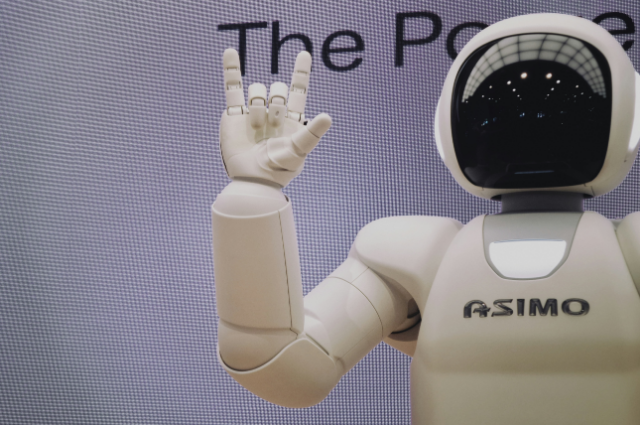
Photo by Sawyer Bengtson on Unsplash
THE IDEA OF SMART CITIES
The concept of "smart cities" refers to urban areas that leverage cutting-edge technology, data-driven systems, and sustainable practices to improve infrastructure, enhance the quality of life for citizens, and optimize resource management.
- These cities integrate innovations such as the Internet of Things (IoT), artificial intelligence (AI), and smart grids to create efficient, sustainable environments that respond dynamically to the needs of their residents.
In 2015, the Government of India launched the Smart Cities Mission, an ambitious initiative aimed at transforming urban spaces by integrating technology with urban development. This program seeks to improve city infrastructure, enhance public services, and promote sustainability in 100 cities across India. By adopting smart solutions for transportation, energy management, waste disposal, and citizen services, the mission aims to make Indian cities more livable, sustainable, and resilient.
As India's urban population continues to grow rapidly, the need to modernize infrastructure and implement digital solutions has become critical. Integrating technology into urban development not only improves governance and resource management but also ensures that cities can meet the demands of the future while addressing current challenges such as traffic congestion, pollution, and inadequate public services. The Smart Cities Mission is, therefore, a vital step toward reshaping India’s urban landscape for long-term growth and sustainability.
OBJECTIVES OF SMART CITIES
The Smart Cities Mission aims to transform urban areas into sustainable and technologically advanced hubs, improving the lives of their residents.
- Enhance urban infrastructure and public services : By integrating modern technologies, cities can offer improved transportation systems, better healthcare, and more efficient waste management, ensuring that essential services are both accessible and reliable.
- Data-driven solutions: For efficient urban management. By collecting and analyzing data from various urban systems, such as traffic, energy, and water supply, city authorities can make informed decisions, reducing resource wastage and improving overall city functionality.
- Promoting sustainability: is also a core focus of smart cities. Green building practices, renewable energy sources, and eco-friendly transportation options like electric vehicles are being prioritized to reduce environmental impact. This not only helps in conserving resources but also positions cities as leaders in combating climate change.
- Improve the quality of life for citizens: by optimizing the use of resources and ensuring better service delivery. Smart water and electricity grids, real-time information on public transport, and digital governance platforms empower citizens to engage more actively with their urban environment, enhancing convenience and overall well-being.
KEY TECHNOLOGIES IN SMART CITIES

Photo by Andrea De Santis on Unsplash
1. IoT (Internet of Things):
The Internet of Things plays a pivotal role in smart cities by connecting various devices and systems to enable seamless communication and automation. In public transportation, IoT sensors help track vehicle locations, manage traffic signals, and monitor passenger flows, enhancing efficiency and reducing congestion.
Waste management is also improved through IoT-based solutions, where smart bins equipped with sensors monitor fill levels and schedule collection routes, minimizing unnecessary trips. Similarly, IoT-powered smart street lighting systems adjust brightness based on real-time activity, conserving energy while ensuring safety.
2. Big Data and AI:
Big Data and Artificial Intelligence are the analytical engines behind the smart city infrastructure. These technologies collect and process vast amounts of data generated by urban activities, offering insights that help optimize city functions.
For instance, AI-driven traffic management systems analyze patterns to reduce congestion and improve route planning. Big Data is also used in water distribution networks to detect leaks, regulate supply, and predict demand, ensuring efficient resource use. Furthermore, AI helps in energy usage optimization, enabling smart power distribution and reducing waste.
3. Smart Grids:
Smart grids are essential for managing energy distribution in smart cities. These advanced electrical grids use real-time data to monitor energy flow, enabling better control over supply and demand. By integrating renewable energy sources, smart grids help cities transition to cleaner power options while ensuring a steady energy supply. They also enable consumers to track their energy usage, reduce consumption during peak times, and contribute to overall energy efficiency.
4. E-governance Platforms:
Digital platforms for e-governance streamline public services in smart cities. These platforms provide citizens with easy access to services such as healthcare, education, and payment systems, reducing the need for physical visits and paperwork.
Through centralized digital interfaces, residents can pay bills, apply for permits, schedule appointments, or access public information with greater convenience. E-governance enhances transparency and responsiveness, making government operations more efficient and accessible to all.
INFRASTRUCTURE DEVELOPMENT
Smart cities are reshaping urban landscapes through the integration of advanced technologies aimed at improving efficiency, sustainability, and quality of life.
- One key area is smart transportation, where intelligent traffic systems use real-time data to optimize traffic flow, reduce congestion, and promote smoother commutes. The rise of electric vehicles (EVs) and enhanced public transport systems also contribute to reducing pollution and easing urban mobility challenges.
- In terms of sustainable buildings, smart cities are leading the way in energy-efficient designs and the use of eco-friendly materials. These buildings incorporate features such as solar panels, advanced insulation, and smart lighting systems to reduce energy consumption while maintaining comfort and convenience for residents.
- Waste management is another critical component, where cities employ smart sensors to monitor waste levels, facilitating timely collection and proper segregation of materials. These technologies make waste disposal more efficient, reduce manual labor, and promote environmental sustainability.
- Water management in smart cities benefits from smart metering systems that track water usage in real-time, detect leaks, and manage distribution more effectively. This approach helps to conserve water, address shortages, and improve overall water resource management.
ROLE OF PUBLIC PRIVATE PARTNERSHIP (PPP) & CITIZEN ENGAGEMENT
A. Role of Public-Private Partnerships (PPP)
Public-Private Partnerships (PPPs) play a crucial role in the development and execution of smart city initiatives across India. These collaborations bring together the strengths of government bodies and technology companies, fostering innovative urban solutions that might otherwise be challenging to implement. By leveraging the expertise and resources of private sector firms, cities can enhance infrastructure, streamline services, and introduce cutting-edge technologies that significantly improve urban living conditions.
For instance, cities like Pune, Surat, and Bhubaneswar have successfully adopted PPP models to advance their smart city projects. In Pune, the integration of intelligent traffic management systems, developed through collaboration with tech firms, has resulted in more efficient traffic flow and reduced congestion. Similarly, Surat has implemented advanced waste management systems, optimizing collection routes and enhancing sanitation through technology. Bhubaneswar's approach to urban governance has seen public-private collaborations facilitate improved public transportation and smart street lighting, showcasing how effective partnerships can lead to tangible urban improvements.
B. Citizen Engagement
Engaging citizens is essential for the success of smart city initiatives. Mobile applications and social media platforms have become vital tools for fostering real-time communication between residents and local authorities. These technologies empower citizens to report issues such as traffic congestion, waste disposal challenges, and other urban concerns promptly. By facilitating direct channels of communication, authorities can respond quickly and effectively, creating a more responsive urban environment.
Moreover, citizen engagement extends beyond reporting problems. It plays a pivotal role in urban planning and governance. By involving the public in decision-making processes, cities can ensure that development projects align with the needs and desires of their communities. Initiatives like participatory budgeting and public forums enable residents to voice their opinions and contribute to shaping the urban landscape. This collaborative approach not only enhances transparency but also fosters a sense of ownership and pride among citizens, making them active participants in the transformation of their urban spaces.
CHALLENGES AND ROADBLOCKS
Building smart cities in India is an ambitious undertaking that faces several significant challenges and roadblocks:
1. High Implementation Costs and Limited Funding:
The financial burden of developing smart city infrastructure is substantial. From advanced technologies to modernized public services, the costs can escalate quickly. Many cities struggle with budget constraints and rely heavily on government grants, which may not always be sufficient. This limited funding can hinder the timely execution of projects and reduce the scope of innovative solutions.
2. Urban-Rural Digital Divide:
The digital divide between urban and rural areas poses a significant challenge for smart city initiatives. While urban areas may benefit from cutting-edge technologies, rural regions often lack basic digital infrastructure. This disparity can lead to unequal access to services and resources, undermining the overall objective of smart cities, which is to improve the quality of life for all citizens.
3. Data Privacy and Security Concerns:
The extensive data collection required for smart city operations raises critical issues surrounding data privacy and security. With the proliferation of sensors, cameras, and interconnected devices, there is an increased risk of data breaches and misuse of personal information. Ensuring robust data protection measures and establishing trust with citizens is essential for the successful implementation of smart technologies.
4. Managing Legacy Infrastructure:
Transitioning from traditional urban systems to smart technologies involves integrating new solutions with existing legacy infrastructure. Many cities grapple with outdated systems that may not be compatible with modern technologies. This can complicate the implementation process and lead to inefficiencies. Finding effective ways to upgrade or replace legacy systems while minimizing disruption is crucial for the success of smart city projects.
Each of these challenges requires careful consideration and strategic planning to ensure that India’s vision of smart cities can be realized effectively and equitably.
FUTURE OUTLOOK

Photo by Possessed Photography on Unsplash
As India embarks on the next phase of urban development, the vision for scaling up the Smart Cities Mission is both ambitious and necessary. The Indian government aims to expand the initiative to more cities, enhancing infrastructure and public services while ensuring sustainable growth.
By focusing on technological integration, cities can become more efficient in resource management, leading to improved quality of life for residents.
Looking ahead, potential advancements in smart technology promise to reshape India's urban landscape significantly. Innovations in areas such as artificial intelligence, Internet of Things (IoT), and data analytics will facilitate smarter decision-making and operational efficiency.
- For instance, the implementation of AI-powered traffic management systems can alleviate congestion, while IoT devices can optimize energy consumption in buildings, resulting in cost savings and reduced environmental impact.
Furthermore, smart cities play a crucial role in India’s commitment to achieving Net-Zero Carbon Emissions by 2070. By adopting green technologies, such as solar power, electric public transport, and energy-efficient buildings, urban areas can significantly reduce their carbon footprint. The integration of smart solutions fosters a sustainable urban ecosystem that not only addresses climate change but also enhances the resilience of cities against environmental challenges.
In conclusion, the future of smart cities in India is poised for growth, driven by technological advancements and a commitment to sustainability. As cities evolve into smarter and greener spaces, they will not only improve the quality of life for their inhabitants but also contribute to a more sustainable and environmentally friendly India.
CONCLUSION
The concept of smart cities holds transformative potential for India, promising to redefine urban living by integrating technology with infrastructure development. By leveraging innovative solutions, smart cities can address pressing urban challenges such as traffic congestion, waste management, and resource allocation, ultimately enhancing the quality of life for residents.
However, realizing the full potential of smart urban development requires sustained efforts from all stakeholders, including government bodies, private sectors, and the community. Continuous innovation in technology and infrastructure must be supported by effective policies and funding mechanisms. Collaboration among diverse groups will ensure that smart city initiatives are not only implemented efficiently but also tailored to meet the unique needs of each community.
In conclusion, the journey toward building smart cities in India is an ongoing process that demands commitment, creativity, and cooperation. By fostering an environment where technology and urban development intersect, India can pave the way for sustainable and resilient cities that thrive in the future.
. . .
References:
- https://www.livemint.com/
- https://www.thehindu.com/
- https://timesofindia.indiatimes.com/
- https://indianexpress.com/
- https://www.indiatvnews.com/
